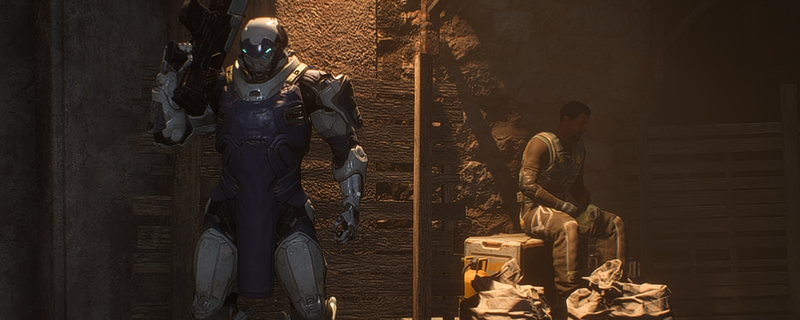Anthem RTX/DLSS PC Performance Review
Conclusion Â
When playing Anthem, we quickly found that DLSS acted differently at different resolutions, a result that we didn’t expect. At 1440p, we found that images appeared as if they were artificially sharpened, whereas 4K images were cleaner and less grainy as a whole. We already knew that DLSS was restricted to specific resolutions on specific graphics hardware, but now it looks like DLSS has some underlying settings that are impacting image quality.Â
If you look at pages two and three of this analysis, you will see a stark difference in the quality of DLSS at 1440p and 4K. Yes, 4K images are higher resolution, but what we are getting at here is that when DLSS is enabled that games will react differently depending on its resolution. In Anthem, it looks like a form of post-process image sharpening is happening at 1440p, resulting in some oddities in our screenshots. Â
This analysis took a while to finish, and that is because we went to the effort to test DLSS at both 1440p and 4K. Though this effort we found that the graphical impact of DLSS can be changed depending on the resolution a game is played at, explaining why the feature isn’t available at all resolutions and is locked down to 4K at 1440p in Anthem.Â
At both 1440p and 4K, using DLSS resulted on a reduction in overall image quality, but at 4K the feature also gave us a whopping 35% boost in performance, both on the RTX 2080 Ti and the RTX 2060. At 4K, this performance boost is well worth the loss in quality, but at 1440p the graphical differences will make the decision to enable DLSS a lot more difficult.Â
Even on our 43-inch 4K gaming screen, we found it extremely difficult to spot the differences between our 4K Native and 4K DLSS screenshots, though careful inspection of these images does reveal that DLSS looks worse that native 4K renderings. That said, the performance increase offered by DLSS is well worth the slight increase in blur.Â
On the RTX 2080 Ti, we played the game for several hours with DLSS enabled, moving through several missions to find that framerates mostly stayed between 50FPS and 80FPS at 4K Ultra settings. Inside caves and caverns, Anthem can shoot up to 90-100 FPS at 4K Ultra DLSS, though in demanding areas the game remains below 4K 60FPS. These framerates wouldn’t be possible at 4K without DLSS.Â
DLSS is a mixed bag, but at 4K the performance increase that’s offered by the feature can be well worth the decrease in overall scene detail. This loss in detail will not be noticed by many players, especially in fast-paced action scenes. Anthem plays much better at higher framerates, which makes DLSS a must at 4K on RTX series graphics cards. On the RTX 2080 Ti, Anthem may not look better with DLSS enabled, but it certainly plays better.Â
Â
You can join the discussion on the performance and graphical impact of Nvidia DLSS in Anthem on the OC3D Forums.Â



